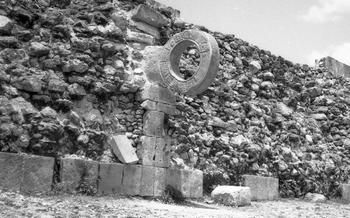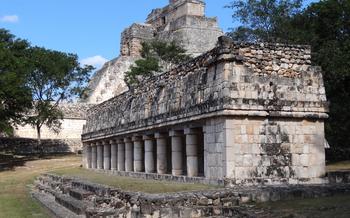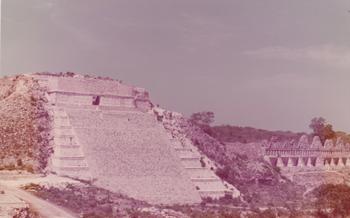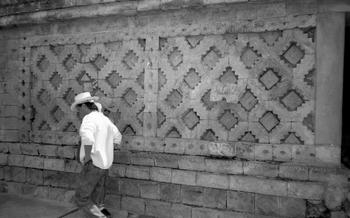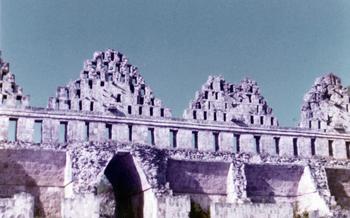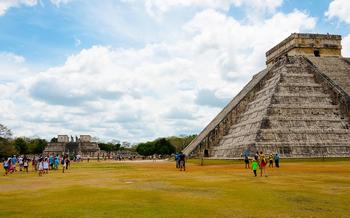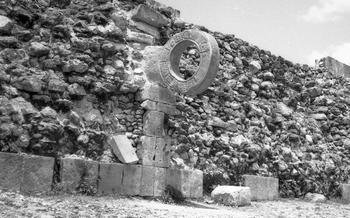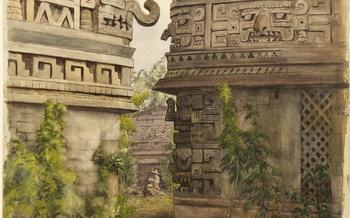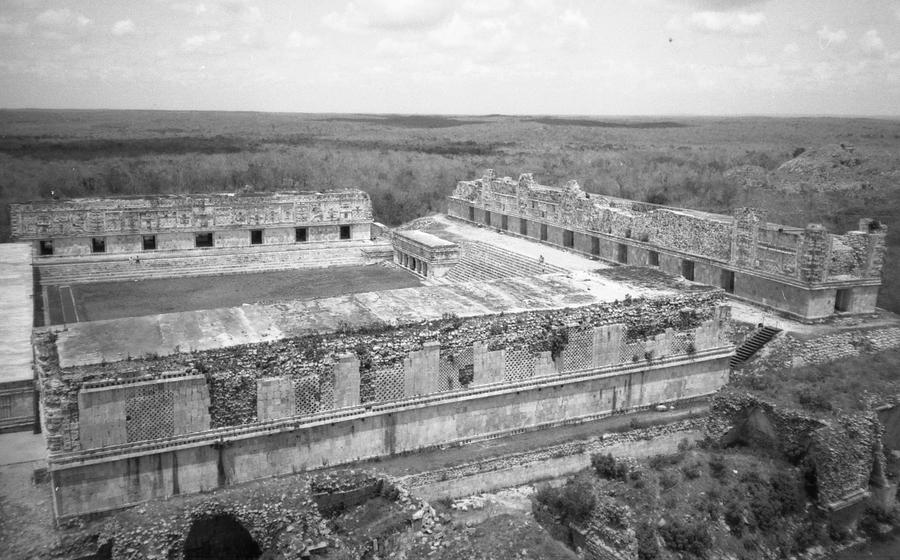
Grutas de Calcehtok
- Uxmal: An Ancient Mayan City in the Yucatan Peninsula
- Grutas de Calcehtok: A Hidden Gem Near Uxmal
- Exploring the Depths of the Grutas de Calcehtok
- Unveiling the Secrets of the Maya at Uxmal
- Tips for Navigating the Caves Safely
- Discovering the Ancient Cenotes of Uxmal
- Unforgettable Experiences in Uxmal and the Grutas de Calcehtok
- Transportation Options for Reaching Uxmal and the Grutas
- Accommodation Options Near Uxmal
- Additional Must-See Attractions Near Uxmal
- Essential Travel Tips for Visiting Uxmal and the Grutas
- Local Cuisine and Culinary Delights
- Unique Souvenirs and Handicrafts
Uxmal: An Ancient Mayan City in the Yucatan Peninsula
Uxmal, a majestic ancient city nestled in the heart of the Yucatan Peninsula, Mexico, stands as a testament to the ingenuity and artistry of the Maya civilization. Its well-preserved ruins, adorned with intricate carvings and towering pyramids, offer a glimpse into the rich cultural heritage of this remarkable civilization. Uxmal's strategic location at the crossroads of important trade routes contributed to its prosperity and prominence, making it one of the most significant cities in the Maya world.
The city's unique architectural style, known as Puuc, distinguishes it from other Maya cities. Puuc architecture is characterized by its use of corbelled arches, ornate facades, and elaborate roof combs, creating a visually stunning effect. Uxmal's most iconic structure, the Pyramid of the Magician, is a testament to the architectural prowess of the Maya. This towering pyramid, reaching over 115 feet in height, features a series of intricate masks representing the rain god Chaac, symbolizing the city's dependence on agriculture.
Uxmal's archaeological site is a treasure trove of ancient wonders, offering visitors a chance to explore a variety of structures, including temples, palaces, and a ball court. The Nunnery Quadrangle, a complex of interconnected buildings, showcases the refined artistry of the Maya with its intricate carvings and well-preserved frescoes. The Governor's Palace, a sprawling complex with over 100 rooms, provides a glimpse into the luxurious lifestyle of the city's elite.
A visit to Uxmal is a journey through time, allowing travelers to connect with the ancient Maya civilization and marvel at their architectural achievements. With its rich history, captivating ruins, and stunning natural surroundings, Uxmal remains a beacon of Maya culture and an unforgettable destination for any traveler seeking to explore the wonders of the Yucatan Peninsula.
Grutas de Calcehtok: A Hidden Gem Near Uxmal
Just a short distance from the ancient city of Uxmal, hidden within the lush vegetation of the Yucatan Peninsula, lies a captivating natural wonder: the Grutas de Calcehtok. These remarkable caves, formed by the erosion of limestone rock over millions of years, offer a unique and awe-inspiring experience for visitors. The caves are adorned with an array of intricate geological formations, including stalactites, stalagmites, and flowstones, creating a mesmerizing subterranean landscape.
The Grutas de Calcehtok hold significant historical and cultural value. The ancient Maya people considered caves to be sacred places, often using them for religious ceremonies and rituals. Archaeological evidence suggests that the caves were used as a burial site, with human remains and funerary objects discovered within their chambers. The caves also served as a source of fresh water, as they contain several cenotes, which were vital for survival in the dry climate of the Yucatan.
Exploring the Depths of the Grutas de Calcehtok
Venturing into the Grutas de Calcehtok is like stepping into a realm of subterranean wonders. The caves boast a dazzling array of chambers and formations, each with its unique charm. As you delve deeper, the intricate stalactites and stalagmites create a mesmerizing spectacle, their delicate structures resembling chandeliers and cathedral columns. The walls are adorned with ancient inscriptions and symbols, offering glimpses into the rituals and beliefs of the ancient Maya who once frequented these sacred spaces.
One of the highlights of the caves is the presence of several cenotes, natural sinkholes that were considered sacred by the Maya. These crystal-clear waters, surrounded by stalactites and stalagmites, provide a refreshing respite from the cave's humidity. Swimming in these cenotes is a magical experience, allowing you to immerse yourself in the tranquil beauty of the caves. The cenotes also hold cultural significance, as they were believed to be portals to the underworld and were used for ceremonial purposes.
Unveiling the Secrets of the Maya at Uxmal
The Maya civilization, renowned for its advanced knowledge in astronomy, mathematics, and architecture, flourished in the Yucatán Peninsula for over 1,500 years. Uxmal, one of the most significant Maya cities in the region, stands as a testament to their architectural prowess and cultural achievements.
- Historical Background of the Maya Civilization:
- The Maya civilization emerged around 2000 BC and reached its peak during the Classic period (250-900 AD).
-
Uxmal, believed to have been founded around the 7th century AD, served as a major ceremonial and political center.
-
Architectural Marvels:
- The Pyramid of the Magician, the tallest and most iconic structure in Uxmal, showcases the Maya's mastery of engineering.
- Its precise alignment with the stars and complex architectural features reflect their sophisticated astronomical knowledge.
-
Other notable structures include the Nunnery Quadrangle, the Governor's Palace, and the Great Pyramid, each showcasing unique architectural styles and intricate carvings.
-
Cultural Significance of the Juego de Pelota:
- The Juego de Pelota, or ball court, holds a prominent place within the archaeological site.
- This ancient ball game, played with a heavy rubber ball, had deep religious and symbolic significance for the Maya.
-
The elaborate carvings on the court walls depict scenes of the game, as well as mythological and historical events.
-
Importance of the Chacmool Statues:
- Chacmool statues, depicting a reclining figure with a bowl on its stomach, are found throughout Uxmal.
- These sculptures played a crucial role in Maya rituals, serving as platforms for offerings and sacrifices to the gods.
- Their intricate carvings and symbolism provide valuable insights into Maya religious practices and beliefs.
Tips for Navigating the Caves Safely
Venturing into the Grutas de Calcehtok requires proper preparation and safety measures. Here's how to ensure a safe and enjoyable cave exploration:
-
Attire and Footwear: Opt for comfortable clothing that allows for easy movement. Closed-toe shoes with good traction are essential for navigating uneven and slippery surfaces.
-
Designated Paths: Stay on designated paths and avoid straying into unmarked areas. Respecting the environment and preserving the natural formations is crucial.
-
Safety First: Be cautious and aware of your surroundings. Watch your step to avoid tripping or slipping. Use handrails and supports where provided.
-
Facilities and Services: Toilets and basic facilities are available at the cave entrance. Remember to bring your own water and snacks, as there are no food or beverage options inside the caves.
Discovering the Ancient Cenotes of Uxmal
Within the archaeological site of Uxmal, visitors can embark on a journey to discover the ancient cenotes that hold deep significance for the Maya civilization. These natural sinkholes, formed by the collapse of limestone bedrock, were considered sacred by the Maya and played a vital role in their daily lives and rituals.
The cenotes served as a vital source of water for the Maya, particularly during the dry season. They were also believed to be gateways to the underworld, Xibalba, and were often used for ceremonial purposes. Offerings and sacrifices were made to the gods in the cenotes, and it is believed that some individuals were even buried within them.
Today, visitors can explore several cenotes within the Uxmal archaeological site. The most notable is the Gran Cenote, located just a short walk from the main ruins. This impressive cenote features crystal-clear water and a lush jungle backdrop, making it a popular spot for swimming and relaxation.
Other cenotes within the Uxmal site include the Cenote X'tacumbilxunaan, Cenote Chocohail, and Cenote Balamkú. While these cenotes are smaller in size, they offer a more intimate and secluded experience, allowing visitors to connect with the natural beauty and spiritual significance of these ancient water bodies.
Swimming in the cenotes of Uxmal is permitted, but visitors must adhere to safety precautions. It is essential to be aware of the depth of the water and to avoid diving or jumping from high heights. Additionally, visitors should be respectful of the cenotes' cultural and environmental significance and refrain from leaving any trash or debris behind.
Conservation efforts are underway to protect the cenotes of Uxmal and preserve their natural beauty for future generations. Visitors are encouraged to support these efforts by following designated paths, avoiding the use of chemicals or sunscreens in the water, and respecting the local flora and fauna.
Unforgettable Experiences in Uxmal and the Grutas de Calcehtok
Beyond the ancient ruins and subterranean wonders, Uxmal and the Grutas de Calcehtok offer a multitude of unforgettable experiences that blend adventure, nature, and culture. Thrill-seekers can embark on exhilarating zip-lining adventures through the lush jungle canopy, soaring over the treetops and enjoying breathtaking views of the surrounding landscape. The region is also a haven for wildlife enthusiasts, providing opportunities for spotting exotic birds, monkeys, and other fascinating creatures that call this ecosystem home.
For those seeking cultural immersion, local markets and souvenir shops offer an array of authentic Mayan crafts and textiles, providing a glimpse into the region's rich artistic traditions. Visitors can haggle with friendly vendors and find unique souvenirs to cherish as mementos of their journey. To fully savor the local flavors, indulge in the delectable regional cuisine, which boasts traditional Maya dishes such as cochinita pibil and panuchos, tantalizing the taste buds with a blend of spices and fresh ingredients.
Transportation Options for Reaching Uxmal and the Grutas
Reaching Uxmal and the Grutas de Calcehtok offers various transportation options to suit different preferences and budgets. For independent travelers, renting a car provides the ultimate flexibility to explore the region at your own pace. The convenience of having your own vehicle allows you to set your itinerary and make spontaneous stops along the way. Rental cars are readily available in major cities like Merida and Cancun, and the drive to Uxmal takes approximately two hours from either city.
For those seeking a hassle-free experience, organized tours from major cities are a popular choice. These tours typically include transportation, guided visits to Uxmal and the Grutas, and additional stops at nearby attractions. The advantage of guided tours lies in the convenience and the expertise of local guides who can provide insights into the history and significance of the sites.
Budget-conscious travelers can opt for public transportation, which involves taking a bus from Merida to Uxmal. Buses depart regularly from the main bus terminal in Merida, and the journey takes about three hours. Once in Uxmal, local transportation options such as taxis or colectivos (shared vans) are available to reach the Grutas de Calcehtok, located approximately 15 kilometers from the archaeological site.
It's essential to consider travel times and distances when planning your transportation. From Cancun, the drive to Uxmal takes about four hours, while from Merida, it takes approximately two hours. Public transportation options may require more time and involve transfers, so it's wise to allocate sufficient time for travel.
Accommodation Options Near Uxmal
Uxmal and its surroundings offer a range of accommodation options to suit different budgets and preferences. Within Uxmal, visitors can find hotels and guesthouses that provide basic amenities and a convenient location near the archaeological site. For a more immersive experience, consider staying at a hacienda, a restored colonial estate that offers a glimpse into the region's history. For budget-conscious travelers, there are hostels and guesthouses in nearby towns like Santa Elena and Muna, which offer comfortable and affordable stays.
When booking your accommodation, consider factors such as proximity to the archaeological site, amenities, and budget. It's advisable to book in advance, especially during peak tourist season, to secure your preferred choice. For a truly unique experience, opt for a stay in one of the charming traditional Maya villages surrounding Uxmal, where you can immerse yourself in the local culture and enjoy the warmth of Mayan hospitality.
Additional Must-See Attractions Near Uxmal
In addition to exploring the Grutas de Calcehtok and the ancient city of Uxmal, the region offers a wealth of other captivating attractions that will enrich your Yucatan adventure. Embark on a journey through time as you visit the nearby archaeological sites of Kabah, Sayil, and Labná, each showcasing unique architectural styles and historical significance. Immerse yourself in the colonial heritage of the region at Hacienda Yaxcopoil, a beautifully preserved hacienda that offers a glimpse into the region's rich past. Take a refreshing dip in the Cenote Azul and Cenote Xlacah, two stunning natural wonders renowned for their crystal-clear waters and idyllic settings. Finally, immerse yourself in the vibrant culture of the local Maya communities, where you can witness traditional ceremonies, learn about their customs, and support local artisans by purchasing their handmade crafts.
Essential Travel Tips for Visiting Uxmal and the Grutas
Planning a trip to Uxmal and the Grutas de Calcehtok requires careful consideration of essential travel tips to ensure a smooth and enjoyable experience. Before embarking on your journey, ensure you have the necessary travel documents, including a valid passport and any required visas. Research visa requirements and apply well in advance to avoid any delays or complications.
Upon arrival, familiarize yourself with local payment methods. While credit cards are widely accepted in major tourist areas, some smaller establishments may only accept cash. Exchange your currency at reputable exchange bureaus or banks to avoid unfavorable rates and hidden fees.
Safety should always be a priority when traveling. While Uxmal and the surrounding areas are generally safe, it's advisable to exercise caution and be aware of your surroundings. Avoid walking alone at night, keep valuables secure, and be wary of potential scams or unsolicited offers.
Respecting local customs and traditions is essential for a harmonious travel experience. Dress modestly when visiting religious sites or conservative communities, and always ask permission before taking photographs of local people. Learning a few basic Spanish phrases can go a long way in showing respect and facilitating communication with locals.
Local Cuisine and Culinary Delights
Indulge your taste buds with the delectable flavors of traditional Maya cuisine during your visit to Uxmal. Savor the rich and aromatic cochinita pibil, a slow-cooked pork dish marinated in achiote paste and wrapped in banana leaves. Experience the delightful panuchos, fried tortillas topped with black beans, shredded turkey, and a tangy tomato sauce. Refresh your palate with local fruits like the sweet chicozapote or the nutritious chaya, often used in refreshing beverages and salads.
For an authentic dining experience, venture into the local restaurants and eateries in Uxmal and nearby towns. Ask for recommendations on where to find the best cochinita pibil or panuchos, and don't miss the opportunity to try other regional specialties like salbutes and papadzules.
To save some pesos, look for budget-friendly options such as local markets or street food vendors. These places often offer delicious and affordable meals that are just as authentic as those served in restaurants. Embrace the vibrant culinary culture of the region and savor the flavors that make Uxmal a foodie's paradise.
Unique Souvenirs and Handicrafts
When visiting Uxmal, be sure to explore the local markets and shops for unique souvenirs and handicrafts. The vibrant artistry of the Maya people is showcased in colorful textiles, intricate pottery, and hand-carved wooden items. Bargaining is a common practice, so don't be afraid to negotiate a fair price. Remember to support local artisans by purchasing directly from them, helping to preserve cultural traditions and sustain the community's economy.
Among the must-buy items are the beautifully embroidered "huipiles" (traditional dresses) worn by Maya women, as well as hand-woven hammocks, rugs, and tablecloths. You can also find a variety of ceramic pieces, ranging from decorative plates to functional cookware, each adorned with intricate designs and patterns. For a truly unique souvenir, look for hand-carved wooden figurines, masks, and musical instruments, which often depict traditional Maya motifs and deities.
When shopping for souvenirs, it's important to be mindful of responsible and ethical practices. Avoid purchasing items made from endangered or protected species, and ensure that the artisans are fairly compensated for their work. By shopping locally and supporting sustainable initiatives, you can contribute to the preservation of Maya cultural heritage while also enjoying beautiful and authentic souvenirs.


